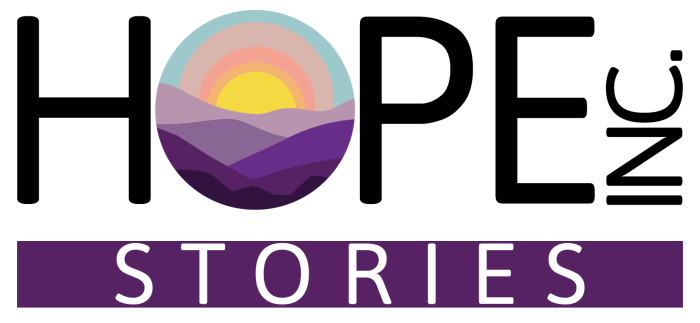
Co-Occurring Self Harm and Substance Use
Self-harm can come in many different forms, and some may be obvious while others are more discreet. Substance abuse and self-harm are also commonly co-occurring, and many factors that influence one may also impact the other. Regardless of the specific type of self-harm behavior someone may engage in, if they hope to recover then help is often needed. This is especially the case when self-harm and substance abuse are co-occurring, and comprehensive treatment is the most effective and reliable way to find relief and recovery.

Why Self Harm and Substance Misuse Co-Occur
Long thought to be solely a manifestation of mental illness, self-harm has become recognized as a serious problem that afflicts those with and without mental illness in America today. Many people who practice self-harm behavior think that it is a way to deal with their problems, and may not recognize the risks and harm it can cause. This guide will educate those who have not experienced this themselves, provide helpful support resources, and give guidance to those struggling with self-harm themselves or their loved ones on what they can do to help.
What Is Self Harm?
While there are 2 types of self-harm, suicidal and non-suicidal, we are focusing on the non-suicidal variety in this article. Non-suicidal self-harm is a serious set of behaviors that can occur as a symptom of a mental illness, but more commonly it occurs in the absence of mental illness. It is most commonly done as a way to cope and deal with stress or trauma. This can take the form of cutting, burning, and many other types of injury that may even be fatal, albeit unintentionally. Self-harm is distinct from suicide attempts, as there is no intentional attempt to end one’s life while self-harming, even though thoughts of suicide may be present. While it has long carried a negative stigma, progress has been made recently to demystify and destigmatize this harmful and potentially fatal behavior.

Self Harm & Substance Abuse
While self-harm and substance abuse are distinct phenomena, there is a very strong correlation between the two. This is especially so during adolescence, and self-harm during someone’s teen years can increase their chances of having a substance abuse issue later in life. One study found a significant increase in someone’s chances of substance abuse and dependence if they had self-harmed during their teen years. For example, compared to the general population, a teen who self-harms is 3.3 times more likely to have a substance use disorder during their teens, is 4.2 times more likely to suffer from multiple dependence syndromes, and is 2 times more likely to suffer from multiple dependence syndromes later in life.
There have been other studies that draw similarities between self-harm and other, more classical addictions, such as drugs. There are some underlying traits that influence both of these behaviors to a similar degree and have a strong positive correlation, namely impulsivity. This, coupled with the significantly higher rates of substance abuse among those who do engage in self-harm, suggests that these distinct behaviors may share an underlying cause. Finally, the approach to treating self-harm as an addiction is showing great promise in helping people successfully recover from this harmful and potentially fatal behavior.

Different Types of Self Harm
There are also many different types of self-harm, some of which are overt while others are covert. The overt types include anything that can cause visible or obvious harm, while the covert forms may be totally invisible to others.
Some different ways that people may practice self-harm behavior can include:
Cutting
Burning (either from friction, flames, chemical burns, or heated objects)
Blunt Trauma (hitting oneself, walls, furniture, etc.)
Self-Piercing (in normal places such as the ears, or more unusual places)
Inserting Objects Into the Body (this behavior is strictly non-sexual, and is intended to cause someone pain or discomfort, but may appear sexual in nature)
Intentional Poisoning
Asphyxiation (hanging, drowning, self-strangulation, etc.)
Someone struggling with self-harm often believes that they have no other way to deal with their problems, and showing someone that there is another way to live is often the first step toward providing help.
Who Performs Self Harm?
Someone may engage in self-harm for a variety of reasons. When self-harm occurs in the absence of mental illness and is used as a coping mechanism, it is most commonly done as a way to change the way someone feels. This has neurological causes, as intense pain releases natural painkillers known as endorphins that can elevate someone’s mood.
Anyone can engage in self-harm behavior. These types of behaviors are not necessarily population or demographic-specific. The common thread seems to be that someone who does engage in self-harm has suffered from some kind of trauma, neglect, or abuse in the past. That being said, self-harm is “observed” more commonly in specific groups, although this does not necessarily mean that it occurs more often in these groups.
The underlying causes of self-harm are very complicated, but it often has to do with trauma or abuse that someone experienced earlier in their life. On average, adolescents are at a higher risk for self-harm than other age groups, with around 10 to 13% of teens reporting instances of self-harm. Among adolescents, girls are over 3x more likely to report self-harm incidents than are boys. That being said, boys commonly under-report personal or emotional problems, and some of the self-harm behaviors that boys may engage in could be blamed on sports or attributed to boys exhibiting more obvious signs of aggression or frustration, such as punching a wall when angry.
There may be indicators that someone is more likely to engage in self-harm, as these behaviors are commonly a result of past trauma. Studies have shown that young people are:
Almost 2x more likely to self-harm if they use drugs
Just over 3x more likely to self-harm if they were bullied in school
Over 2x more likely to self-harm if they were physically abused
Over 2.5x more likely to self-harm if they have sexual orientation issues
Almost 3x more likely to self-harm if their friends engage in self-harm
Just over 2x more likely to engage in self-harm if someone in their family self-harms
While the exact numbers varied between gender, these reported odds ratios are for the average of both male and female adolescents. While these were very close between gender, for the most part, there were some outlier instances. Boys were much more likely to self-harm than girls in instances of sexual orientation issues (3.82x more likely) and self-harm by family members (8.85x more likely).

How Can I Help Someone Who Self Harms?
Self-harm is most commonly used as a coping technique and is usually the only way someone knows how to deal with trauma, self-esteem issues, or neglect. Being a compassionate, caring, and supportive friend or loved one can go a long way toward showing someone they’re not alone. It can be scary to bring up a topic such as self-harm with someone you care about, but asking someone if they are ok, and more importantly, listening to their response in a non-judgmental and supportive way can be huge for them.
There are also many types of therapy that have proven quite effective at helping someone overcome their self-harm habits, and guiding someone towards a therapist can help them find a healthy way out of their situation. Everyone responds a little differently to certain kinds of therapy, and the specific issues that someone may be dealing with may indicate one type of therapy is preferable to another. That being said, some of the most effective types of therapy for helping someone struggling with self-harm can include:
Cognitive Behavioral Therapy (CBT)
Dialectical Behavior Therapy (DBT)
Mentalization-Based Therapy (MBT)
While these types of therapy are all closely related, some types may be more effective depending on someone’s particular situation. For example, some studies have shown that DBT seems to be very effective at treating adolescents who practice self-harm with a co-occurring mental health issue, particularly depression, anxiety, or bipolar disorders.
Regardless of the specific therapy that someone undergoes, there is significant evidence that entering treatment will result in an improved long-term outcome. Additionally, since someone who engages in self-harm is much less likely to seek treatment on their own, it becomes even more crucial to reach out to someone who may be struggling with self-harm. Letting them know that there is another way and that treatment can help can make all the difference in the world.
While there is a distinction between suicidal and non-suicidal self-harm, those who engage in non-suicidal self-harm have a much higher long-term chance of attempting suicide as opposed to people who do not engage in any self-harm behavior. While it may not seem like a life or death issue today, it may very well be tomorrow. Oftentimes, the best chance someone has of recovery from co-occurring self-harm and substance abuse issues is to enter a dual diagnosis treatment center.
Self Harm Recovery Resources
While self-harm is, unfortunately, not discussed openly too much these days, there are places to go to talk to someone who will listen, has experience with self-harm, and can help. Some of these may include hotlines, text lines, websites, and treatment centers. Depending on someone’s circumstances, some of these avenues may be more appropriate or desirable than others.
Self-Harm Phone Helplines
Help is just a phone call away. There are people available 24/7/365 to offer support and guidance for anyone struggling with self-harm. If someone is afraid of letting their loved ones know about their struggle, a text line may be the most discreet way to reach out for help. Someone can use these types of resources anywhere, anytime, without fear of being overheard.

Text HOME to 741741

S.A.F.E. Alternatives (Self Abuse Finally Ends)
Call 1-800-366-8288 to be connected with a care counselor.

National Sexual Assault Hotline (RAINN)
Call 1-800-656-4673 anytime, 24/7 to be connected with a trained counselor. There is also an online chat option.

Available 24/7 by calling 116-123

National Suicide Prevention Lifeline
Call 1-800-273-8255 anytime, 24/7 to be connected with a crisis counselor.

Call 1-800-273-8255 and Press 1 to be connected with a veteran crisis counselor anytime 24/7. There is also an online chat and text line available. Text 838255 for help.
Self-Harm Awareness & Prevention Resources
Even if someone does not engage in self-harm themselves, it can be useful to be aware of the realities of self-harm, so that when they do encounter someone struggling, they may be able to help. The following sites provide additional resources to educate, inform, and guide someone to seek help themselves or to be able to help someone else:
Self-Harm Treatment Resources
There are many different approaches to treating self-harm behaviors, and some people will find certain methods more effective than others. Thankfully, there are many options for treatment, so anyone will be able to find the help they need. Some good places to start include:

A government site that will connect people with the care and treatment they may need for a variety of mental or behavioral health issues.

Another government site that offers a treatment locator tool for finding help anywhere in the country.

TRUE Addiction and Behavioral Health
Mental health facility located 45 minutes outside of Nashville in Murfreesboro, TN that treats all manor of mental illnesses.

A non-profit treatment center that provides counseling and care to those struggling with self-harm or thoughts of suicide.

A North Carolina-based treatment center, they provide care and support for adolescents suffering from self-harm and other issues.

Self Harm Awareness Day
Self Harm Awareness Day is March 1st and the month of March is Self Harm Awareness Month.






